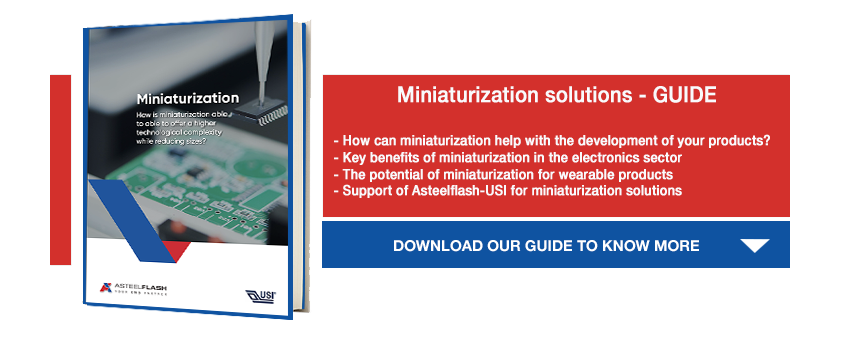Getting more for less has always been an attractive proposition, but in the product development world of today, a slightly different concept is rapidly gaining traction: getting more in less. Or, to put it another way, miniaturization. Across the board, in applications as diverse as automotive systems and medical devices, there is an increasing requirement for solutions – typically electronic solutions – that are physically smaller yet ever more functional.
Miniaturization for new technology
In the past, miniaturization in electronics has relied on semiconductor evolution, but now there’s another approach – miniaturization through modular integration. Essentially, this means integrating active and passive components in a single compact package to produce a system in a package (SiP). This approach has even greater potential for size reduction than relying on semiconductor developments.
Traditionally, mobile phones have been the key drivers of miniaturization, but now its benefits are creating demand in numerous sectors. Wearable devices such as fitness watches, medical devices such as blood glucose monitors, automotive subsystems, stereo wireless and even smart baggage tags: all depend on miniaturization. And, with growing interest in the likes of wearable wellness improvement technologies and augmented reality glasses, dependency on miniaturization is sure to increase further.

Miniaturization considerations
Given these factors, companies that enthusiastically embrace miniaturization in their new product development programs are on the track to increased profitability and success. But smooth progress along that track depends on finding the right EMS/ODM partner to support the implementation of miniaturized solutions. Actually, EMS might not even be the right description for that partner, as a key element of the partnership will be design support, which is beyond the remit of traditional EMS providers.
That design support will need to be expert and wide ranging: developing practical SiP solutions brings many challenges not only in achieving the desired functionality, but also in ensuring optimum thermal and EMC performance while maximizing power economy. Software expertise is also likely to be needed to make best use of programmable devices. The ability to take an overall view is another essential: while SiP solutions are often appropriate, that’s not always the case. A good design team will identify exceptions and advise accordingly.
To match its design expertise, the EMS/ODM partner must have capable manufacturing facilities. This means advanced process technology that will ensure a dependably high yield for fine-pitch assemblies with a large component count. Excessive reject rates quickly erode both profit margins and customer confidence.
And the partner will need facilities for comprehensive testing that takes into account the required performance not only of the module, but also that of the system overall.
Expert miniaturization partner
Asteelflash is able to offer miniaturization services through our parenting company USI’s qualified and skilled teams. USI has proven expertise in developing and manufacturing SiP solutions as well as conventional miniaturized assemblies. We adopt a collaborative partnership approach to working with customers to help them maximize the benefits – and profits – that are unlocked by new technologies. To find out download our guide !




